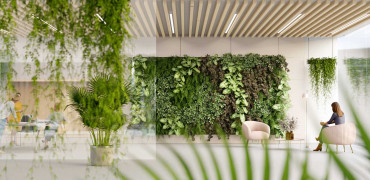Prefabricated homes or prefab as most of us know them, are homes or buildings that are manufactured off-site in advance of construction. These homes are made in sections and are easily shipped and then assembled.
Prefab buildings have been a feature of our towns and cities for many, many years. The original post war prefabs were built for function. People needed houses that were both cheap and immediate.
Today’s prefabs have much more emphasis on the aesthetic, even futuristic in terms of design and sustainability.
However, the qualities of these structures remain the same. Prefab homes are without question cheaper, more sustainable and efficient in construction.
Prefab diminishes risk and if you diminish risk you reduce costs.
The environmental case for prefab
The recent growth in popularity for prefab houses has stemmed from our awareness of environmental issues.
As a society our preference to buy, make and build sustainably is rightly growing. Construction, architecture and development need to reflect this and all have to meet increasingly higher standards.
Prefab buildings are desirable and highly sustainable. Benefits include reduced waste, prefabricated components take almost 70% less energy to manufacture than conventional building ones.
By choosing prefab we are tackling sustainability at the beginning of the process. Start well, end well..
Healthier spaces
Eco-homes are not only a more valuable investment for the future but they also create a healthier living space to suit the younger generations demands and expectations.
With a prefab home the majority of the construction is designed and completed in a controlled environment using advanced technology.
Prefab is particularly beneficial for projects in dense and urban areas. Prefab components aren’t subject to geography, quality checks and alterations are seamless and workflow is efficient.
Prefab construction is systemized. Components can be assembled off site, the project is organised, assembled, created and altered before construction, increasing productivity and diminishing risk.
If you diminish risk you reduce costs. Prefab homes are structurally sound and can focus on low VOC (Volatile Organic Compounds) building materials, bamboo ply and FSC certified wood to name a few.
More affordable housing
In light of the recent horror that is the cost of living crisis it is clear that with rising house prices, rising interest rates and rising mortgage costs, the UK needs to find alternative and more affordable housing options. If the Government won't take action, who will?
Surprisingly in reaction to the recent global and home grown economic climate creating a housing crisis, John Lewis has announced that it will build accommodation over selected supermarkets and department stores.
Another retail giant reacting to recent political developments is IKEA, it is using its expertise to build affordable homes in the UK. BoKlock, the parent company of IKEA, is working in partnership with Worthing council to build 162 flats. The development will of course be green and homes will be efficient.
The only viable option
If we are to meet the Government's aims and claims to build approximately 300,00 new homes a year, then prefab will surely be the only viable option.
Most prefab homes of today demonstrate green architecture, the latest technology, solar panels, heat pumps, rainwater systems and recycled materials as standard. A long way from our traditional new builds. Prefabs are future proof.
Since Covid the increase in people working from home has led to homeowners reviewing their green credentials in their existing and future homes.
Eco friendly fixtures that can help reduce soaring energy bills are surely a must. It is thought that almost three-quarters of home buyers would like their next property to be more eco friendly.
The healthier living environment that prefab homes can create, will be a valuable investment for the future. The reduced living costs of energy efficient building will be a must and the socially conscious among us will demand a net zero way to live.
Maybe it won't all be ‘location, location, location’?
Kirsty Hammond is Editor of Specifier Review



